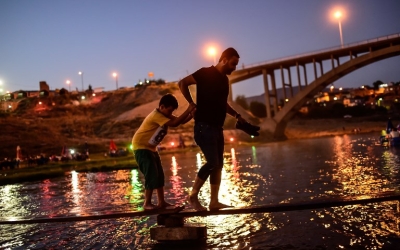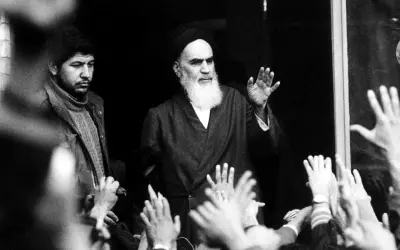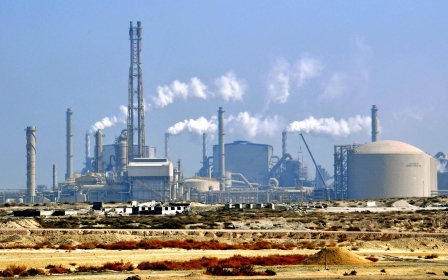Iranian press review: Iran to exchange three Iranian-American detainees for release of frozen assets

Tehran to exchange detained Iranian Americans for funds
Iran would “soon” free three Iranian-American citizens in exchange for the release of its $7bn funds which had been frozen in South Korea due to US sanctions, according to a Farsi news outlet close to the government.
The news was first reported last week by the Farheekhtegan daily but drew little attention due to no comments from officials in Tehran.
Quoting unnamed sources familiar with the case, the Farheekhtegan wrote that detainees Bagher and Siamak Namazi, as well as Morad Tahbaz, would be freed following negotiations on the sidelines of the Vienna talks to revive the 2015 nuclear deal.
'In return for having access to its money blocked in [South] Korea, Iran will release three Iranian-American spies with dual citizenship'
- Farheekhtegan daily
"In return for having access to its money blocked in [South] Korea, Iran will release three Iranian-American spies with dual citizenship," the daily wrote, referring to the prisoners convicted of espionage. The three detainees have denied the accusations.
New MEE newsletter: Jerusalem Dispatch
Sign up to get the latest insights and analysis on Israel-Palestine, alongside Turkey Unpacked and other MEE newsletters
Since 2012, western powers have cut off Iranian banks' access to the international money transfer system.
On Tuesday, Iranian government officials publicly confirmed that parts of the country’s frozen assets would be released by the end of this week.
While foreign ministry spokesperson Saeed Khatibzadeh and President Ebrahim Raisi's government spokesperson Ali Bahadori Jahromi spoke about the frozen funds, neither commented on the potential release of the imprisoned Iranians with dual citizenship.
Some other Farsi outlets suggested that a deal was made to free the Iranian-American citizens. The Ebtekar daily also reported that Oman's central bank would mediate between Iran and South Korea for transferring the $7bn funds.
If the exchange takes place, this would be the third release of frozen Iranian assets permitted by London and Washington since the hardline President Raisi took office last August.
Last month, Iran freed two Iranian-British citizens, Nazanin Zaghari-Ratcliffe and Anoosheh Ashouri, after London paid back a £393m ($514m) debt to Iran.
Turkish dams blamed for Tehran air pollution
Iranian officials have blamed Turkey’s ongoing Southeastern Anatolia Project (GAP) as the primary culprit for causing a wave of sand storms that have brought on unprecedented air pollution in Iran's 26 provinces and made Tehran one of the world’s most polluted cities.
Darioush Gol Alizadeh, the head of Iran's National Centre for Weather and Climate, told Tasnim news agency on Saturday: "The GAP project has cut most parts of Iran of water shares from the Tigris and Euphrates rivers, and subsequently, large swathes of lands [in Iraq] turned into sources of sand and pollutants.”
The GAP, which is set to feature 22 dams and reservoirs, 14 of which will be located on the Euphrates, looms as a future threat over downstream Iraq.
Furthermore, "any weak wind" would cause a sand storm in neighbouring Iran, following the completion of the Ilisu Dam in eastern Turkey, Gol Alizadeh said.
He also urged officials in Iran's foreign ministry to take the case of the GAP to international courts and demand Iran's water share.
In recent days, two waves of intense sand storms hit Iran, and the amount of pollution in Tehran has reached a dangerous level.
Tasnim quoted Mojtaba Zolvojoudi, a deputy in Iran's department of environment, as saying: "The GAP has had a huge negative impact on Iran and the Hur al-Azim wetland.”
Environmental activists say the presence of this wetland prevents the occurrence of fine dust and sand and dust storms.
Zolvojoudi said the Turkish project was a potential danger for the entire region and would cause drought in parts of Iran, Iraq and Syria.
Last week Tehran was ranked as one of the most polluted cities in the world by IQAir, a global air quality monitoring company, citing “unhealthy” air pollution levels nearly eight times over the WHO annual air quality guideline value.
Iran’s heritage sites at risk of demolition
Historical buildings and heritage districts across Iran are at risk of being demolished at a “rapid speed”, the ISNA news agency reported.
In a report under the headline "The Autumn of Cultural Heritage", ISNA provided a list of buildings and sites in danger of disappearing due to authorities' negligence and uncontrolled urbanisation.
The list included a historical Armenian church in the village of Lilian which was turned into a parking lot, a historical Shiri house and Mozafar school demolished in Hamedan, and the destruction of parts of a 1,000-year-old mosque in Zavareh.
Several Unesco World Heritage sites in Iran, such as the Shushtar historical hydraulic complex and the 2,200-year-old Ghaleh Dokhtar fortress in Kerman province, are also at risk due to a lack of restoration funds, ISNA said.
Since Ezzatollah Zarghami, a member of the Islamic Revolutionary Guard Corps ( IRGC), was appointed Iran's cultural heritage minister, many specialists have flagged up potential fallout from appointing a non-expert to lead this ministry.
In October, in a controversial interview, Zarghami suggested changing the laws that banned digging water wells inside the 2,600-year-old Pasargadae, which is another World Heritage site.
Political activist recalls dreams from prison
A prominent Iranian political activist, Bahman Bazargani, has spoken about the dreams he had when he was held in the infamous Evin prison before the 1979 revolution.
Bazargani was one of the leading members of the Mojahedin Khalgh Organisation (MKO), which fought against the Shah's dictatorship. Along with his older brother, he was arrested in 1972, and both of them were sentenced to death.
After receiving a partial pardon, his punishment was reduced to life in prison, and Bazargani was freed following the 1979 revolution. However, his brother, Mohammad, was executed in 1972.
Asked by the Shargh daily to name a place that he could still vividly remember, Bazargani said: "The prison, its cells, its collective rooms, and its corridors.”
"Inside the prison, I often dreamed of flying. And during the about four decades since I was released, I kept dreaming of the prison. In my dreams, I see the same people I was in prison with, at the same age as we were back then," he added.
The Iranian revolution occurred more than 40 years ago while the Shah’s power was at its peak. But its consequences endure, having triggered a set of geopolitical earthquakes that transformed and redrew the boundaries of the Middle East.
The regime change in Tehran in 1979 deprived the US of one of its leading strategic assets in the region. Energy markets were affected by a second oil shock after the 1973 one, and a Shia revival reactivated the centuries-old Sunni-Shia confrontation within Islam.
*The Iranian press review is a digest of reports that are not independently verified as accurate by Middle East Eye
Middle East Eye delivers independent and unrivalled coverage and analysis of the Middle East, North Africa and beyond. To learn more about republishing this content and the associated fees, please fill out this form. More about MEE can be found here.






